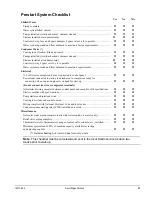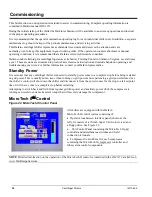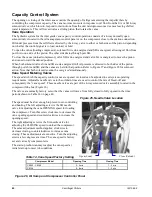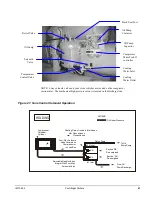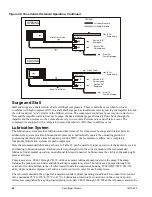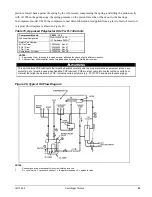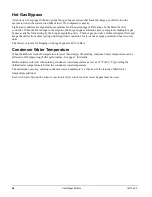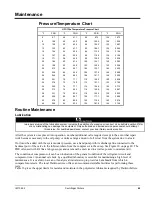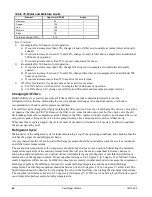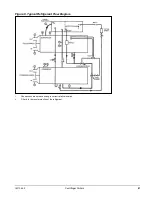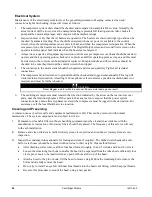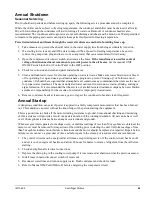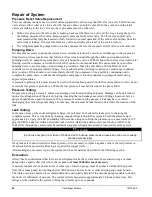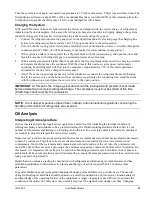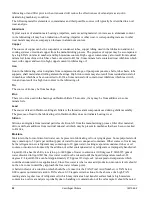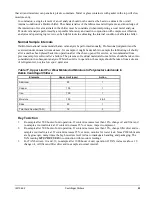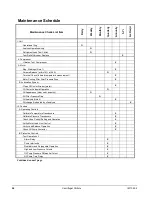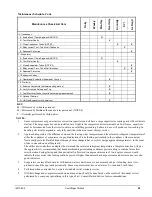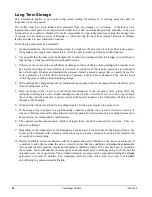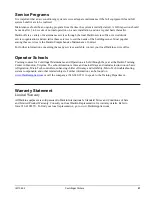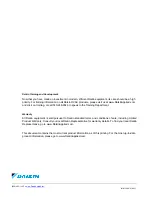
IM 1044-2
Centrifugal Chillers
51
Then the system is once again evacuated to approximately 29 inches of mercury. This is repeated three times. The
first pulldown will remove about 90% of the noncondensables, the second about 90% of that remaining from the
first pulldown and, after the third, only 1/10-1% noncondensables will remain.
Charging the System
WSC and WDC water chillers are leak tested at the factory and shipped with the correct charge of refrigerant as
indicated on the unit nameplate. In the event the refrigerant charge was lost due to shipping damage, the system
should be charged as follows after first repairing the leaks and evacuating the system.
1.
Connect the refrigerant drum to the gauge port on the liquid line shutoff valve and purge the charging line
between the refrigerant cylinder and the valve. Then open the valve to the mid-position.
2.
Turn on both the cooling tower water pump and chilled water pump and allow water to circulate through the
condenser and the chiller. (It will be necessary to manually close the condenser pump starter.)
3.
If the system is under a vacuum, stand the refrigerant drum with the connection up, and open the drum and
break the vacuum with refrigerant gas to a saturated pressure above freezing.
4.
With a system gas pressure higher than the equivalent of a freezing temperature, invert the charging cylinder
and elevate the drum above the condenser. With the drum in this position, valves open, water pumps
operating, liquid refrigerant will flow into the condenser. Approximately 75% of the total requirement
estimated for the unit can be charged in this manner.
5.
After 75% of the required charge has entered the condenser, reconnect the refrigerant drum and charging
line to the service valve on the bottom of the evaporator. Again purge the connecting line, stand the drum
with the connection up, and place the service valve in the open position.
IMPORTANT
: At this point, the charging procedure should be interrupted and prestart checks made
before attempting to complete refrigerant charge. The compressor must not be started at this time.
(Preliminary check must first be completed.)
NOTE
: It is of utmost importance that all local, national, and international regulations concerning the
handling and emission of refrigerants are observed.
Oil Analysis
Interpreting Oil Analysis Data
Oil wear metals analysis has long been recognized as a useful tool for indicating the internal condition of
rotating machinery and continues to be a preferred method for
Daikin
centrifugal chillers.
Daikin
Service or a
number of laboratories specializing in oil testing can do the test. To accurately estimate the internal condition it
is essential to properly interpret the oil wear test results.
Numerous test results from various testing laboratories have recommended action that has prompted unnecessary
concern by customers. Polyolester oils are excellent solvents and can readily dissolve trace elements and
contaminants. Most of these elements and contaminates eventually end up in the oil. Also, the polyolester oils
used in R-134a chillers are more hygroscopic than mineral oils and can contain much more water in solution. For
this reason, it is imperative that extra care be used when handling polyolester oils to minimize their exposure to
ambient air. Extra care must also be used when sampling to ensure that sample containers are clean, moisture-free
leak proof and non-permeable.
Daikin
has done extensive testing in conjunction with refrigerant and lubricating oil manufacturers and has
established guidelines to determine action levels and the type of action required. Table 1 indicates these
parameters.
In general
Daikin
does not recommend changing lubricating oils and filters on a periodic basis. The need to
change lubricating oil and filters should be based on a careful consideration of oil analysis, vibration analysis
and knowledge of the operating history of the equipment. A single oil sample is not sufficient to estimate the
condition of the chiller. Oil analysis is only useful if employed to establish wear trends over time. Changing

